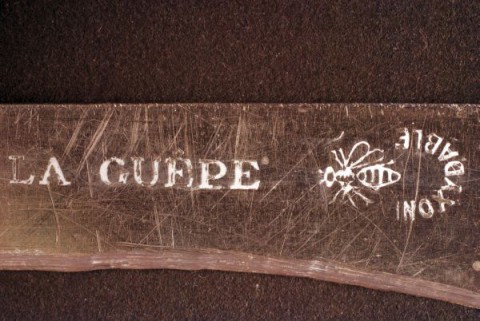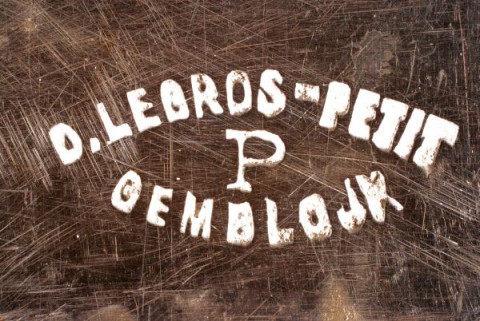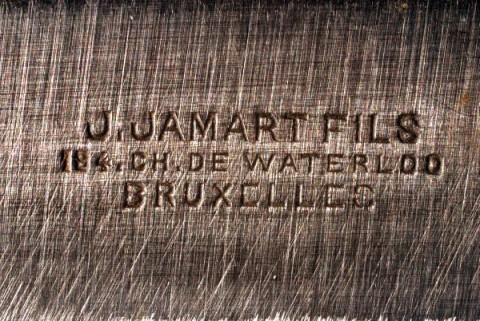
All kinds of identifying marks: symbols, letters or numbers, can often be found on tools.
These marks may refer to the manufacturers (e.g. Paul Dubois’s La guêpe (wasp)), or to the place where the piece was made (e.g. Gembloux). They emphasize the quality (e.g. acier garanti (guaranteed steel)) or a property (e.g. inoxydable (stainless)); warn that there is a patent pending or in existence; record the name of the object; even give an indication of how to use it, etcetera.
In addition there may also be marks of ownership or embellishment.



Very often the mark is impressed in the metal. Sometimes it is printed on the implement with an ink stamp, or a label is stuck to it. In these last cases you will sometimes find an implement that is no longer marked.
An indication to the manufacturer (be it the smith, the local forge or an industrial toolmaker) is very useful both for human history, and for the history of the product. We collect such records under the title of ‘forge marks’. They help us to determine the origin and date of a piece; which was the product of a specific manufacturer; how and how far the production of a specific manufacturer was distributed; which products were once used in a specific area; which marks were used or not as a ‘signature’, or whether or not these marks were subject to fashion, etc.
It should be noted that as well as tools other products made by the smith were sometimes marked. For instance, ice skates, certain pieces of house fittings, some mill-irons or a few choir screens, or bladed weapons.


Forge marks were already used in the Middle Ages, particularly on knives and shears, but many smiths did not mark their products at all. In spite of this, forge marks can tell us a lot about the past and consequently help many people in their research: the genealogist who studies the history of his family, the local historian who wants to know more about his village, the archaeologist, the researcher carrying out technical-historical or socio-economic research, and so on. They can all use forge marks as source material to supplement their paperwork and expand their knowledge, as has long been the case with the marks of goldsmiths, tin smiths, potters, pan makers, masons, carpet weavers, etc.

- Johan De Punt (Trades and Tools / roof supports)
- Marnix Pieters (VIOE)
- Raf Schepers (Open-air museum Bokrijk)
- Yves Segers (CAG)
- Aimé Stroobants (Municipal museums Dendermonde)
- Eva Van Hoye (Local History Flanders)
- Johan Van Steenkiste (Province West-Flanders / Provincial Museum Bulskampveld)
